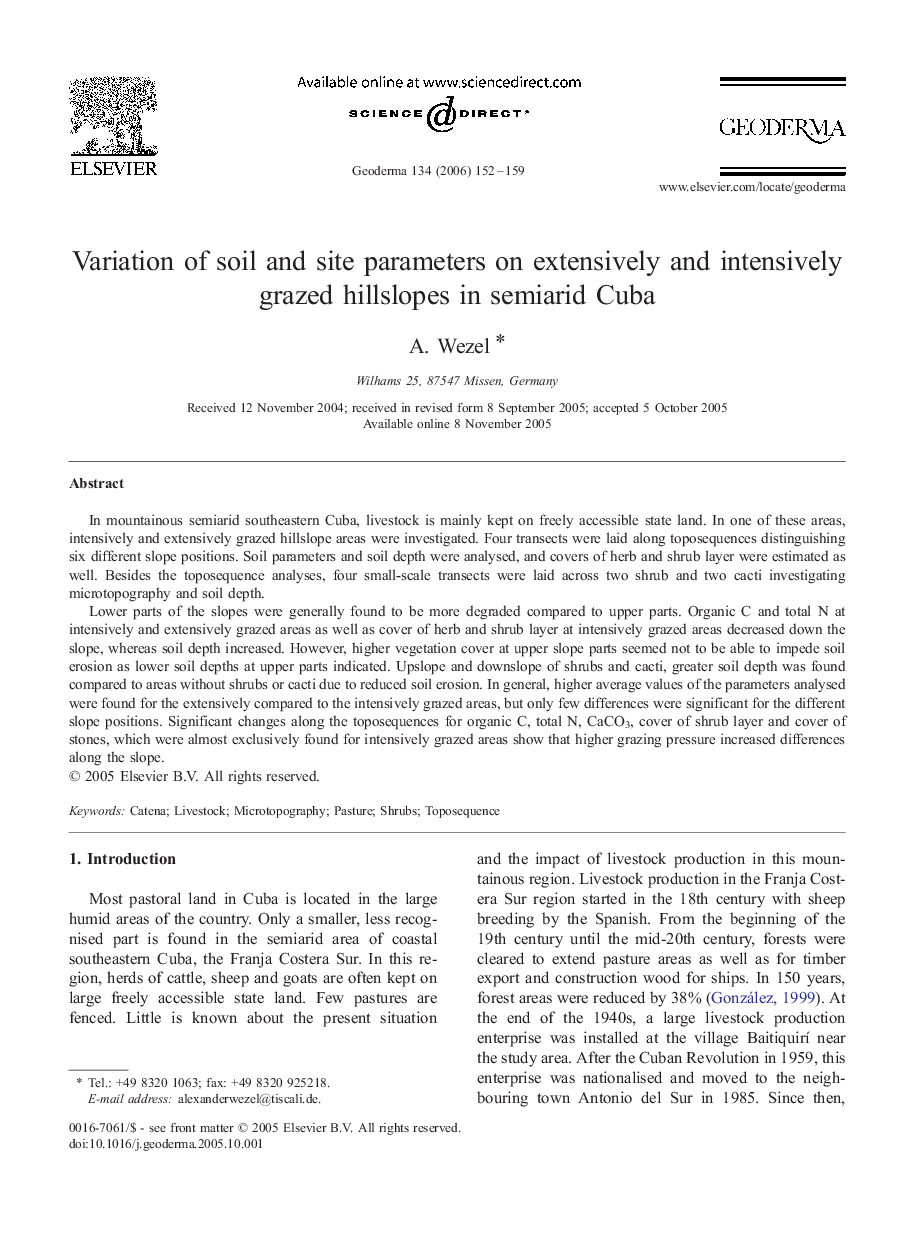| Article ID | Journal | Published Year | Pages | File Type |
|---|---|---|---|---|
| 4575796 | Geoderma | 2006 | 8 Pages |
In mountainous semiarid southeastern Cuba, livestock is mainly kept on freely accessible state land. In one of these areas, intensively and extensively grazed hillslope areas were investigated. Four transects were laid along toposequences distinguishing six different slope positions. Soil parameters and soil depth were analysed, and covers of herb and shrub layer were estimated as well. Besides the toposequence analyses, four small-scale transects were laid across two shrub and two cacti investigating microtopography and soil depth.Lower parts of the slopes were generally found to be more degraded compared to upper parts. Organic C and total N at intensively and extensively grazed areas as well as cover of herb and shrub layer at intensively grazed areas decreased down the slope, whereas soil depth increased. However, higher vegetation cover at upper slope parts seemed not to be able to impede soil erosion as lower soil depths at upper parts indicated. Upslope and downslope of shrubs and cacti, greater soil depth was found compared to areas without shrubs or cacti due to reduced soil erosion. In general, higher average values of the parameters analysed were found for the extensively compared to the intensively grazed areas, but only few differences were significant for the different slope positions. Significant changes along the toposequences for organic C, total N, CaCO3, cover of shrub layer and cover of stones, which were almost exclusively found for intensively grazed areas show that higher grazing pressure increased differences along the slope.
